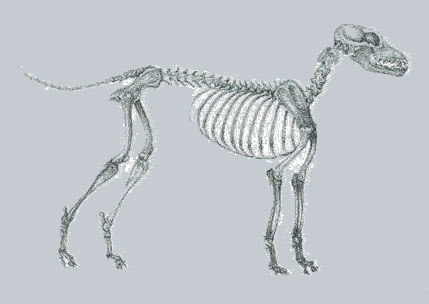As we age, our joints and muscles continue to need motion to maintain their balance and motion. True for animals too. When your dog and cat (or other pets) begin to reach those golden years, daily exercise is even more important in some ways.
Joints begin to stiffen somewhat with arthritic type changes and that limits the amount and comfortableness of the joints in question. In dogs, it is very common to see that stiffness upon getting up first thing in the morning, after lying for the day, after too much vigorous activity. Like the rusty hinge we all know about, after we get things moving, they move easier and with less resistance.

The joints involved in motion are called facet joints (in the spine) and these are a type of hyaline joints (as with knee, shoulder, hip joints). This hyaline cartilage in its healthy state is smooth, almost slick, and has fluid producing capability that lubricates those joints. As joints age, the ability to self lubricate decreases and the hyaline cartilage changes its sliding ability (friction increases, elasticity of tissues decreases) and as that particular joint spacing narrows, the stiffness shows up. The bony areas rely on motion to maintain calcium uptake. The hyaline joints require movement to help with the lubrication aspect. The intervertebral disc need motion to get any sort of blood flow going to them.

So how much is too much? GOOD QUESTION!! Each dog is different and “too much” often relates to their history of previous injury, breed specific type of arthritic tendencies, and the kind of exercise. An animal with neck problems due to injury or overuse, is likely to have some discomfort if their exercise regimen involves jumping down off of high areas. The dachshund or beagle that has those disc tendencies (short legs, long back, short to the ground) it helps to have exercise that keeps the abdominals strong – working on exercise peanuts, swimming, digging with the head lower than the tail. Larger dogs like german shepherds or golden retrievers tend to have those low back, pelvis and hip imbalances in general so they can benefit from most exercise.
Lots of breeds have knee injuries and the stop/start fast movements can irritate those dogs.

An animal is also neurologically primed for specific actions. The golden retriever and black labs want to chase, grab, and retrieve. The pointer and other bird dogs thrive on stalking, and finding ground birds. The beagle puts its nose to the ground and and does not even hear their commands because their neurology takes over. All dogs have things that are satisfying to them and knowing your breed and allowing them to do what that breed is designed for is so important. We could talk about Jack Russells too but that would take a bit longer. Digging and jumping come to mind as well as lots of other things……and for these little guys, they are very smart and need challenging things to figure out.
So your pet can be the daily exercise you need. Be sure to find a safe place to allow them to run at times, retrieve things if it is not a problem with knees, smell, jump (within reason) and do those things that they do automatically. Their genetic tendencies are always there.
Check with your veterinarian to discuss your breed or mixes of your breed and their natural tendencies and try to provide some of what they love doing if left to themselves.
Enjoy daily walks, runs, and swims with your animals. They will help to keep you motivated…

